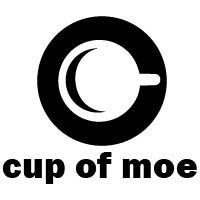We may earn money or products from the companies mentioned in this post.
Like everything, romance seems to have migrated to the screen. Dating apps populate app stores in hordes: Tinder, HowAboutWe, OkCupid, Bumble, Hinge…well, you get the picture. There are probably more dating apps available than viable dates. Writer and Vice.com contributor Karley Sciortino explored the online dating landscape, and the technology behind the swipe.
With dating apps, typically the UI is considered the most important aspect. While it’s undoubtedly an integral part of the dating app revolution, Oxford Internet Institute fellow Dr. Bernie Hogan argues that the app is less important than the user data being created and used. Sicortino sat down with Tinder’s VP of Technology Dan Gould shared some interesting tidbits: it’s apparently much easier to predict when men will swipe right women than when women will swipe right on men. Make of that what you will. Gould also presented stats on a lower divorce rate, speculating that it could be due in part to increased use of dating apps to properly identify matches.
By the year 2040, an estimated 70% of all couples will have met online
Tinder CEO Sean Rad likened phones as extensions of the self. Next time you’re in any public place, look around: you’ll probably notice a veritable sea of smartphones. Next time you’re at dinner with a group of friends, try playing the “Phone Stacking” game. Not only will this foster actual conversation, but it’ll help you realize just how often you check your phone. Basically, smartphones are the new smoking. Rad is right, phones have morphed into extensions of ourselves. Resistance is futile.
Further corroborating the theory that phones and dating apps are integrating themselves into our lives is another key component of the app: location. Update any application, and likely one of the permissions it needs approval for is location services (of course, this is poised to change for Android users with the permission controls of Marshmallow). I once checked my location history with Google Maps, and it was basically an oval: work, home gym. Maybe the grocery story. Hopefully your lives are more eventful than mine. Usually dating apps take advantage of your GPS to select potential matches, and there’s one in particular that relies on location data: Happn. You happen upon people everyday, and Happn connects users with those who they’ve crossed paths with.
There’s a debate that rages on whether the increased focus on apps, dating and otherwise, is killing culture or revolutionizing it. With dating apps, some including BBC historian Lucy Worsley, have decried them as the downfall of romance. Others like Sicortino feel that there’s an online revolution, even relating it to the counterculture of the 60’s. Either way, it’s clear that there’s more to an app than the UI, and additionally that mobile apps of all kind are evolving to incorporate more fluidly into our lives. Developers are clearly taking advantage of all aspects of smartphone hardware, from the obvious touchscreens to GPS, and data collection.
Is the evolution of apps and phones as extensions of the self beneficial, harmful, or a little of both? Got a funny dating app story to share? Let us know in the comments section below or on Twitter!
This post may contain affiliate links. We are a participant in affiliate programs such as the Amazon Services LLC Associates Program, an affiliate advertising program designed to provide a means for us to earn fees by linking to Amazon.com and affiliated sites. However, all products are thoroughly tested and reviews are honest and unbiased.

